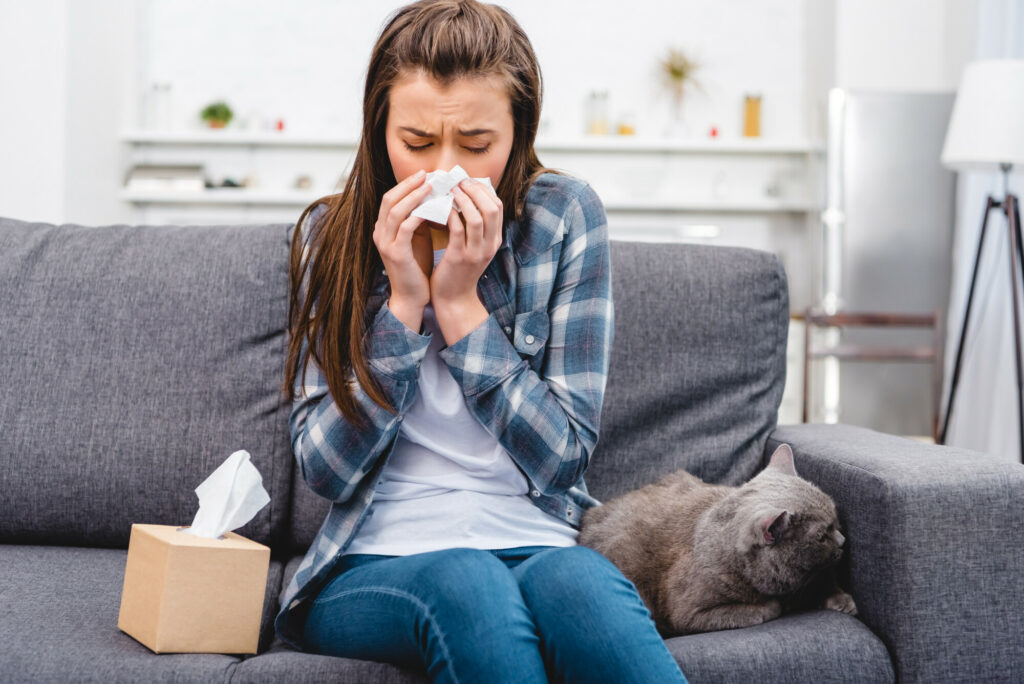Your Home Health Guide: How to Prevent Allergies at Home

Over 50 million people suffer from allergies in the U.S. each year. If you’re among them, your home should be your safe haven.
Whether you’re allergic to pollen, dust, pet hair, or other common allergens, it’s important to know how to reduce their presence in your home.
There’s no need to be miserable with allergies at home. There are steps you can take to improve your home’s indoor air quality.
If you’re looking for a little relief from your allergy symptoms, we can help you create a sneeze-free environment. Here’s a guide for reducing indoor allergy symptoms.
Leave Allergens Outside
Half of the allergens inside your home probably came in with you. If you have a pet, they’re also bringing in allergens.
Allergens come into your home on your clothes and shoes or on your pet’s hair and paws. But you can do something to reduce this problem.
Before you enter your home, remove your shoes, coat, scarf, hat, or any extra clothing. Whenever possible, shower after coming home or engaging in outdoor activities.
This can help prevent the transfer of allergens to your carpeting, furniture, bedding, and other areas of your home. Place door mats inside and outside your external doors to reduce the amount of allergens people and pets are dragging in.
Dust Frequently
If you have a dust mite allergy, it’s important to dust frequently. The more dust that accumulates, the more likely you are to suffer from allergy symptoms like sneezing, coughing, and itchy, watery eyes.
Use a damp sponge or soft cloth to wipe down surfaces in your home. Doing this regularly can help keep dust particles from dispersing into the air and triggering your allergies.
Using a vacuum attachment helps with hard-to-reach areas like corners and crevices. Dust from the top (ceiling fans and light fixtures) and work downward to the floor for best results.
Change Your Bedding
Do you know that dust mites love to hide in your mattress, pillows, and other bedding? Yuck!
You can minimize the problem by encasing your mattress, box spring, and pillows with an allergen-proof cover. Washing your sheets and pillowcases each week in hot water can help keep the dust mites at bay.
Monitor Humidity Levels
Mold and dust mites love a humid environment. If you use a humidifier to add moisture to the air, it’s important to monitor the humidity levels in your home.
A humidity monitor can help you keep the right level of humidity in your home. Keeping the level below 50% can reduce mold and dust mites and prevent their growth.
You can use a dehumidifier if needed and use vent fans in the bathroom and kitchen to minimize humidity.
Invest in an Air Purifier
If you suffer from allergies, an air purifier is an investment in your health. It can help filter out impurities such as smoke, dust, pollen, and other airborne particles.
Clean indoor air can help you breathe easier, lower your allergy symptoms, and improve your sleep.
Start Eliminating Allergies at Home
Nothing is more important than your health and breathing fresh, clean air. You may not be able to change your outdoor allergy triggers, but you can improve your allergies at home.
At Kleen Breeze Indoor Environmental Services, we heal sick homes. Our goal is to keep the air quality of your home as clean and healthy as possible.
If you’re ready to improve the air quality of your home, give us a call today!
